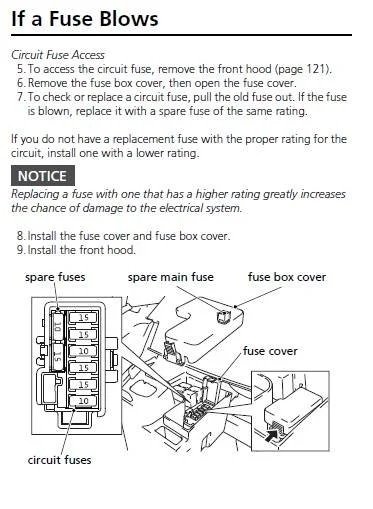The Honda Pioneer 500 is a reliable UTV, but owners may encounter issues like transmission glitches or overheating. Solutions include regular maintenance and checking coolant levels.
Exploring the great outdoors or tackling tough tasks is where the Honda Pioneer 500 shines, however, even this rugged side-by-side isn’t immune to problems. Owners should be aware of common challenges such as transmission hiccups, cooling system problems, and potential electrical gremlins.
Staying informed about these issues ensures quick resolutions, keeping your Pioneer 500 in top condition for work or play. This guide offers practical advice and expert solutions to common troubles faced by Honda Pioneer 500 owners. Through preventive care and troubleshooting tips, you’ll be ready to address any setbacks swiftly, ensuring your Pioneer 500 continues to perform at its best on every adventure. Keep your UTV running smoothly by understanding the problems it might face and how to fix them.
Common Issues Honda Pioneer 500
Welcome to our guide on tackling common issues with the Honda Pioneer 500, the rugged and reliable side-by-side powerhouse of 2024.
Despite its impressive capabilities, the Pioneer 500, like any machine, can experience hiccups.
Let’s dive into some of the most frequent challenges and their practical solutions.
Overheating
The Honda Pioneer 500 works hard, and sometimes a little too hard, leading to overheating.
Don’t ignore an engine that’s running hotter than usual.
Check the coolant levels first and make sure air can flow freely through the radiator.
Bugs, mud and leaves often block vents.
Clean them out to prevent your engine from getting too hot.
If these steps don’t cool things down, it’s time to consult your mechanic.
Electrical Problems
Electrical gremlins can appear in even the toughest vehicles.
The Pioneer 500 is no exception.
- A blown fuse can cause a lot of trouble.
- Replace it if needed.
Battery issues are also common.
Make sure it’s fully charged and the terminals are clean.
Wiring can get damaged over time.
Look for cuts, wear, or corrosion.
Starting Issues
Is your Honda Pioneer 500 stubborn at startup?
This can be frustrating but is often an easy fix.
- Check the fuel lines for any blockage.
- Ensure your spark plugs are in good condition.
- The battery should have a strong charge.
If the engine still won’t fire up, the issue could be more complex.
In such cases, professional diagnostic tools might be necessary.
Troubleshooting Tips Honda Pioneer 500
When your Honda Pioneer 500 starts acting up, quick troubleshooting can save the day. Understanding common problems and knowing how to address them will keep your machine in top shape. Let’s dive into some proactive tips to keep your Pioneer 500 running smoothly.
Check Cooling System
The cooling system keeps your engine from overheating. To maintain peak performance:
- Ensure the coolant level is adequate.
- Look for leaks in the system.
- Check the radiator cap for a tight seal.
- Inspect hoses for cracks or wear.
- Clean the radiator to remove debris.
Inspect Electrical Connections
Electrical issues can lead to performance problems. Keep your connections in check:
- Check all connectors for dirt and corrosion.
- Tighten any loose wires or terminals.
- Apply dielectric grease to prevent moisture entry.
- Inspect fuses and replace if blown.
Test Battery
A healthy battery is key for starting your Honda Pioneer 500:
- Make sure the battery terminals are clean.
- Use a multimeter to test the battery’s voltage.
- Charge the battery if the voltage is low.
- Check for a secure battery cable connection.
- Consider replacing the battery if it’s old or damaged.

Preventive Maintenance
The key to keeping your Honda Pioneer 500 running smoothly is regular preventive maintenance. By dedicating time to maintain your vehicle properly, you can avoid common issues that often plague off-road enthusiasts. Stay ahead of potential problems with these essential maintenance tips.
Regular Oil Changes
Changing the oil in your Honda Pioneer 500 routinely ensures its engine stays healthy. Use the right oil type and replace it according to the manufacturer’s schedule. This simple step can prevent engine wear and help maintain peak performance. Keep track of your oil change history for the best care.
Air Filter Maintenance
A clean air filter is crucial for your engine’s breathing. Dirt and debris in the filter can lead to performance issues. Regularly check and clean or replace the air filter, especially after rides in dusty conditions. This maintenance keeps your engine running efficiently and extends its lifespan.
Inspecting Tires
Properly maintained tires are vital for safe rides. Regularly inspect your tires for pressure, tread wear, and punctures. Keep them inflated to the recommended level for optimal grip and fuel efficiency. Early detection of tire issues can prevent accidents and costly repairs.
Diy Solutions
Welcome to the ‘DIY Solutions’ section for your Honda Pioneer 500. Here, you’ll find simple, straightforward advice on maintaining your machine. Let’s dive into some common problems and how to fix them yourself. Save time and money with these easy-to-follow steps!
Cleaning Fuel Injectors
Cleaning your fuel injectors is crucial for your Honda’s performance. Dust and dirt can clog them over time. A clean injector will ensure better fuel efficiency and a smoother engine operation. Begin by purchasing a quality injector cleaner solution. Make sure your Pioneer 500 is cool and that your workspace is well-ventilated.
- Locate the injectors.
- Disconnect the power supply.
- Remove the injector.
- Soak it in the cleaner.
- Brush off any residue.
- Rinse and dry the injector.
- Reinstall the injector.
Start the Pioneer and let the engine run for a few minutes. Listen for smooth operations and feel the difference in performance.
Replacing Spark Plugs
Spark plugs are essential for the ignition of your Pioneer 500. They need a replacement from time to time. You will notice faster starts and better engine performance with new spark plugs.
- Buy the right spark plugs for your model.
- Wait for the engine to cool before you start.
- Find the spark plugs’ location in the engine bay.
- Remove the old spark plug carefully.
- Set the new plug’s gap correctly.
- Install the new spark plug gently.
- Reconnect the power and test the engine.
Afterward, your ride should feel refreshed, and you’ll notice immediate improvements. Tackling these simple DIY solutions will keep your Honda Pioneer 500 running smoothly, saving you both time and money.
When To Seek Professional Help
Owning a Honda Pioneer 500 means embracing both adventure and responsibility. While it’s a robust machine, it’s not immune to problems. Most issues you can tackle yourself with some basic know-how. Yet, certain situations are best left to professionals. Recognizing when professional help is necessary saves time, money, and ensures your safety.
Complex Electrical Issues
Electrical systems are tricky. They demand precision and expertise. If your Pioneer 500 starts acting up and you suspect the cause is electrical – such as persistent warning lights, a dead battery that’s not charging, or fuses that keep blowing – it’s time to let the pros handle it. Professional mechanics can diagnose and fix complex circuits safely.
- Erratic lights or instrument panel malfunctions
- Failure to start, even with a new battery
- Frequent fuse blowouts with no clear cause
Engine Rebuilds
The heart of your Pioneer 500 is its engine. An engine rebuild is a serious task. It includes taking apart your engine, cleaning all the parts, and replacing what’s worn out. You’ll need special tools and deep knowledge for this. If you notice things like smoke from the exhaust, unusual noises, or a significant drop in power, contact a certified mechanic. They have the experience to restore your engine’s performance.
Signs You May Need an Engine Rebuild
| Excessive Smoke | If smoke is blue, white, or black, there’s likely an internal issue. |
|---|---|
| Strange Noises | Knocking or clanking sounds can indicate worn or damaged parts. |
| Power Loss | A significant decrease in engine performance warrants attention. |
Leaving complex work to the experts not only ensures your Honda Pioneer 500 stays in top condition but also keeps you safe on your off-road adventures. Don’t hesitate to seek professional help when faced with serious issues.
Frequently Asked Questions
What Are Common Honda Pioneer 500 Faults?
Honda Pioneer 500 owners often report issues with the transmission, such as hard shifts or gear slippage. Electrical problems, specifically with the vehicle’s ignition system, and overheating of the engine are also noted. Regular maintenance can mitigate these common faults.
How To Troubleshoot Pioneer 500 Starting Problems?
Starting problems in the Pioneer 500 typically involve checking the battery, starter motor, and ignition switch. Ensure the battery is fully charged and connections are clean. If the issue persists, the starter motor or ignition switch may need inspection or replacement.
Can I Fix Honda Pioneer 500 Overheating Issues?
Yes, overheating in the Honda Pioneer 500 can often be resolved by ensuring the coolant level is adequate and the radiator is clear of debris. Regularly replacing old coolant and checking for leaks in the cooling system are critical steps in preventing overheating.
What To Do If Honda Pioneer 500 Won’t Shift Gears?
If your Honda Pioneer 500 won’t shift gears, first check the transmission fluid level and quality. If the fluid is fine, inspect the shift cables or linkage for damage. A professional may be needed to diagnose internal transmission problems.
Conclusion
Navigating the terrain with your Honda Pioneer 500 should now feel reassuring. We’ve tackled common issues and practical fixes to enhance your driving experience. Remember, regular maintenance is key. For further guidance or troubleshooting, consult your dealer or a skilled mechanic.
Happy trail-blazing in your Pioneer 500!



